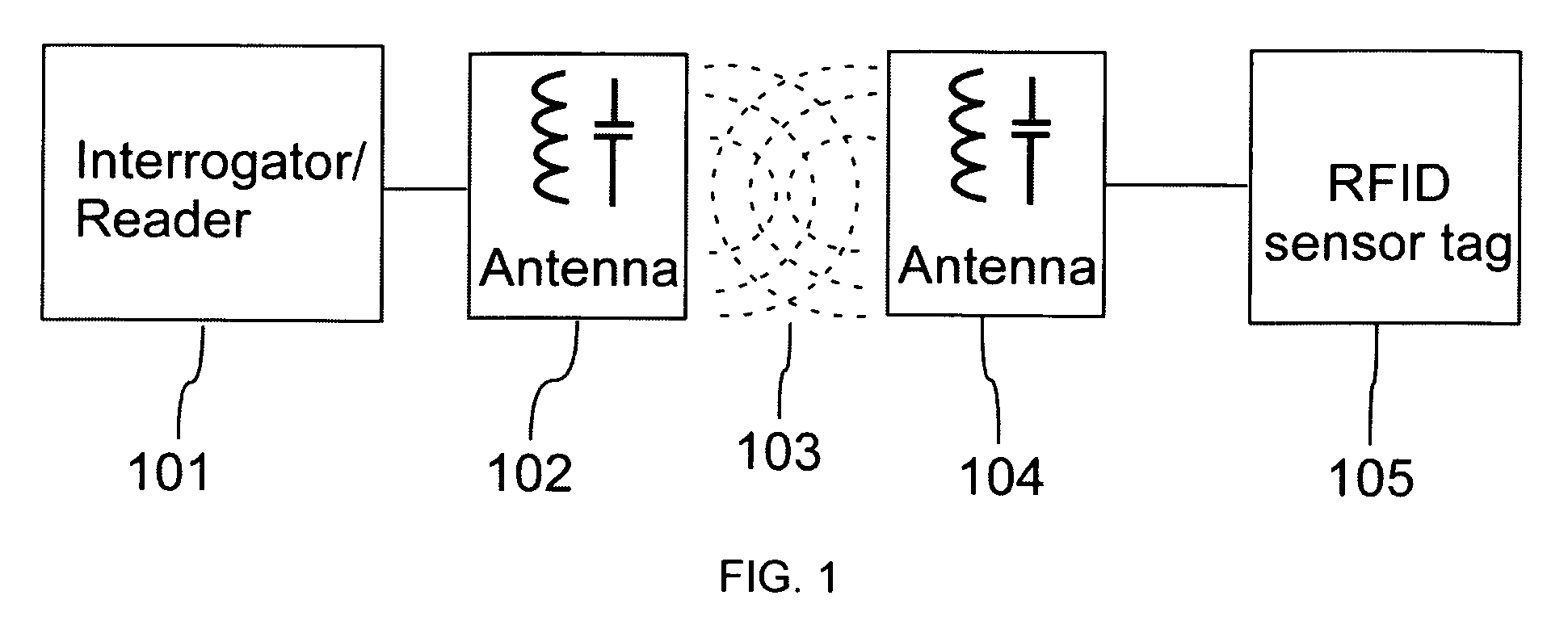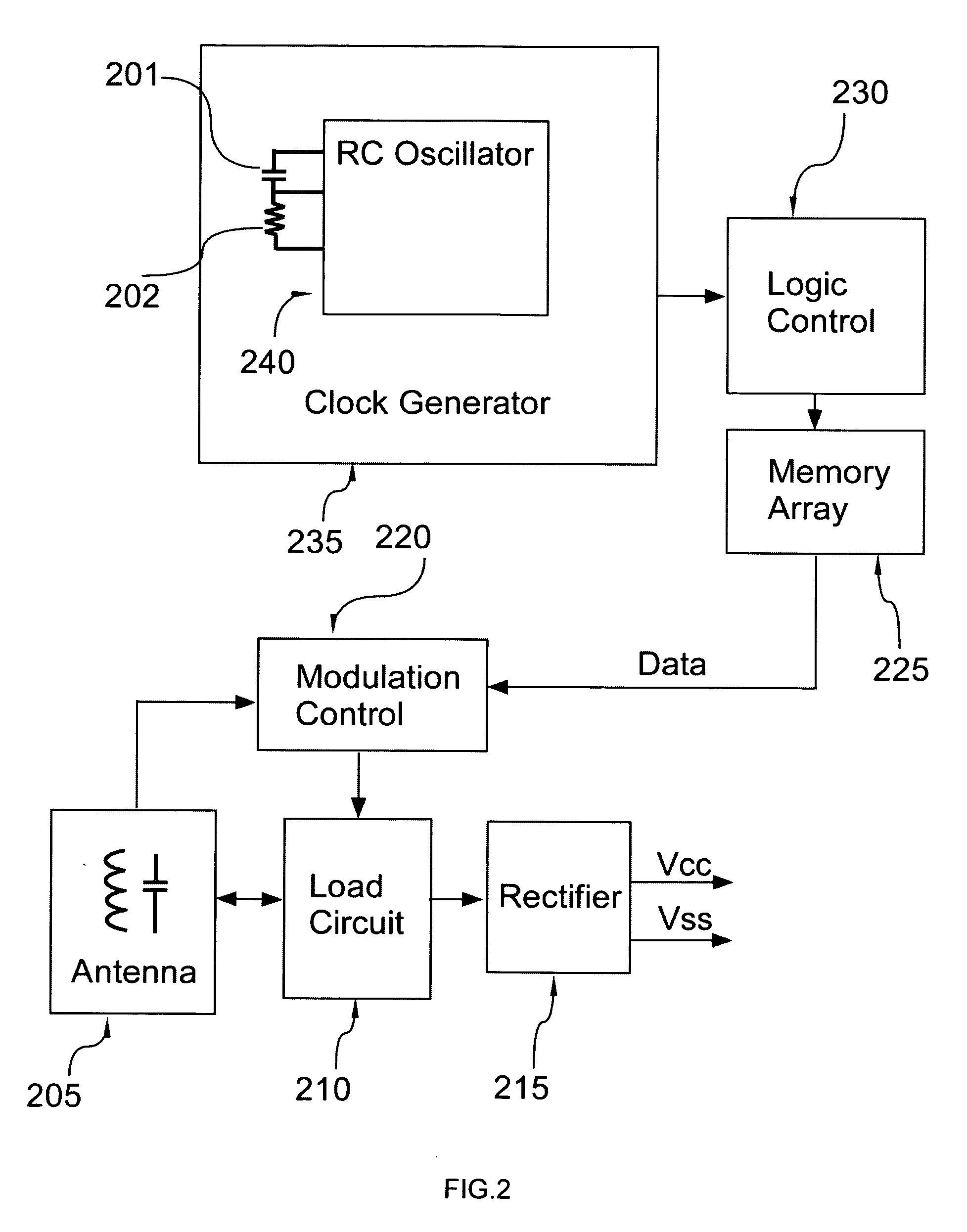RFID sensor device based on pulse-processing
- Summary
- Abstract
- Description
- Claims
- Application Information
AI Technical Summary
Benefits of technology
Problems solved by technology
Method used
Image
Examples
Embodiment Construction
[0022]As depicted in FIG. 1, the RFID sensing system comprises an interrogator device 101 with an antenna 102 and an RFID sensor tag device 105 with an antenna 104. The RFID sensor tag device 105 has no internal power source. It gains power from a near field or far field RF103 generated by the interrogator device 101. After the tag device 105 is powered, it then changes the amplitude of the RF carrier with a sequence of code stored inside the device. The change in amplitude is detected by the interrogator device 101 and therein the patterns in the amplitude change, which contain the code information, are examined. The demodulated code is used for further data processing.
[0023]The block diagram of an embodiment of the RFID sensor tag device is shown in FIG. 2, in which, a clock generator 235, which includes an oscillator 240, is employed to provide a synchronous signal for a logic control block 230 to read the RFID code from a memory array 225. The RFID code is then encoded and modul...
PUM
 Login to View More
Login to View More Abstract
Description
Claims
Application Information
 Login to View More
Login to View More - R&D
- Intellectual Property
- Life Sciences
- Materials
- Tech Scout
- Unparalleled Data Quality
- Higher Quality Content
- 60% Fewer Hallucinations
Browse by: Latest US Patents, China's latest patents, Technical Efficacy Thesaurus, Application Domain, Technology Topic, Popular Technical Reports.
© 2025 PatSnap. All rights reserved.Legal|Privacy policy|Modern Slavery Act Transparency Statement|Sitemap|About US| Contact US: help@patsnap.com



